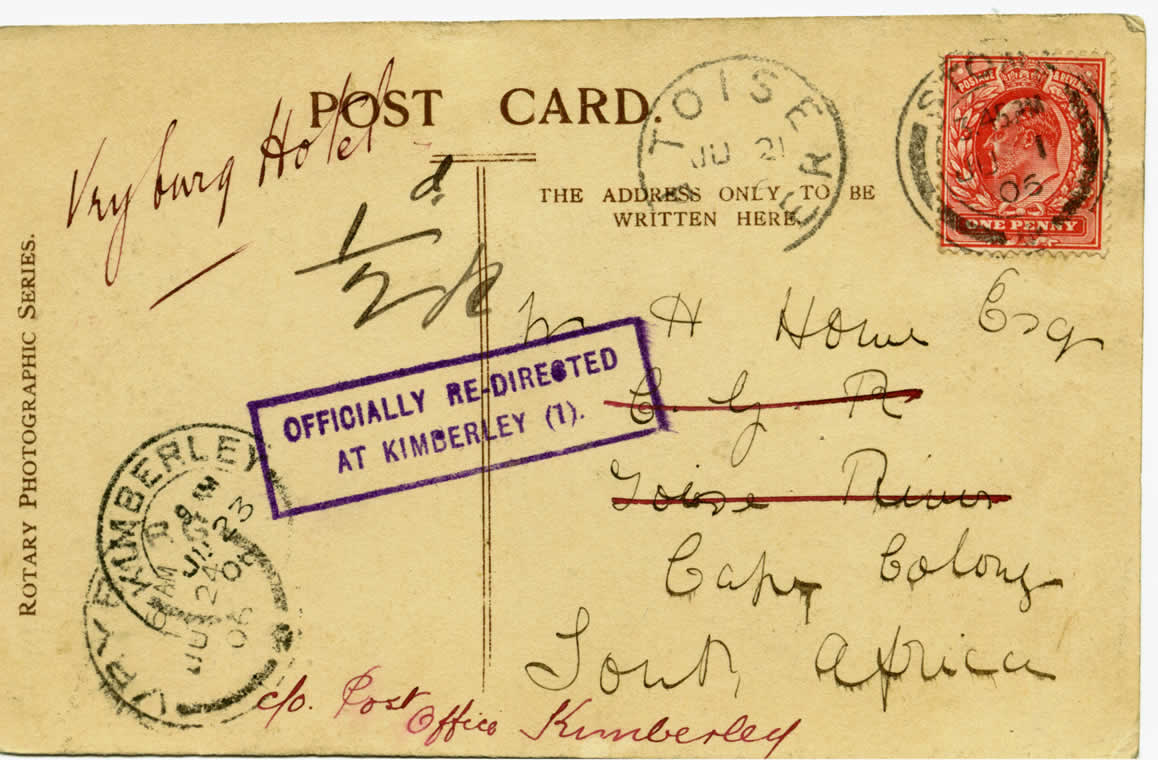Letter required to be redirected because the addressee had moved needed to be additionally stamped with an amount equal to the original postage; an amount that was required each time the letter was redirected. If the addressee refused to pay the additional redirection fee, the letter was returned to the sender, who was then liable for double the postage thereon.
From 1890 no charge was made for redirection, provided the letter was unopened and reposted within a short time. The post office used a rubber handstamp (SP 36) when instructions to redirect were received.
Boxed rubber handstamps (SP 37 and 38) were brought into use at Cape Town and Port Elizabeth. These have numerals after the name of the town; 1, 2 and 3 being used in Cape Town and 1 and 2 at Port Elizabeth. A similar handstamp (SP 39) was issued to Wellington, but this does not show a numeral. These handstamps were in use from about 1904.


There were also single- and double-lined redirectional handstamps (SP 40 and 41) in use at King Williamstown in 1906 and at Wynberg in 1909.


